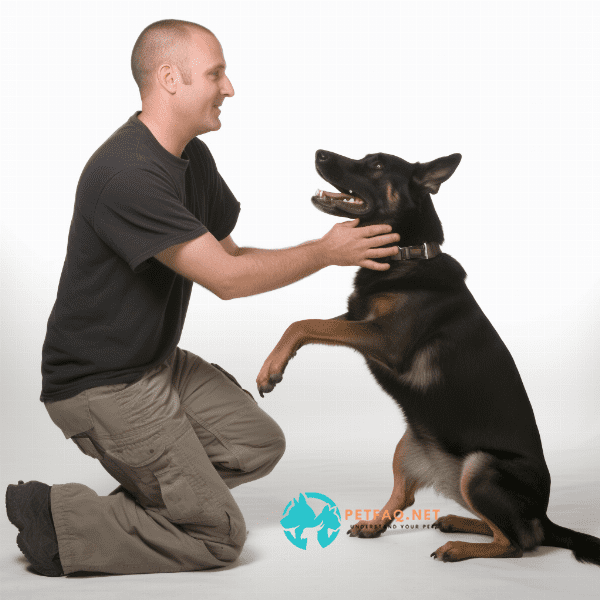Table of Contents
- Why Choosing the Right Dog Training Treats is Important
- Understanding Your Dog’s Nutritional Needs
- Types of Dog Training Treats Available
- Factors to Consider When Choosing Dog Training Treats
- Tips for Using Dog Training Treats Effectively
- Homemade Dog Training Treat Recipes
- Common Mistakes to Avoid When Using Dog Training Treats
- Alternatives to Treat-Based Training
- Conclusion: Setting Your Dog Up for Success with the Right Treats
Why Choosing the Right Dog Training Treats is Important
As a responsible pet owner, you want to give your furry friend the best possible start in life. That’s why choosing the right Dog training treats is crucial. The treats you choose can have a significant impact on your dog’s training results, as well as their overall health and well-being.
The Benefits of Using Dog Training Treats
Dog training Treats are an excellent tool for reinforcing positive behavior and encouraging obedience. They provide an instant reward for good behavior, which helps to reinforce the desired behavior and make training more effective.
Using treats as a reward also helps to create a positive association with training, making it more enjoyable for your dog. This positive reinforcement can strengthen your bond with your furry friend and encourage them to learn and grow.
The Risks of Choosing the Wrong Dog Training Treats
While dog training treats can be a valuable tool for training your furry friend, it’s important to choose the right ones. The wrong treats can have the opposite effect, hindering your dog’s training progress and even posing a risk to their health.
Some treats contain unhealthy ingredients, such as high levels of sugar or artificial preservatives, which can lead to obesity, dental problems, and other health issues. In addition, some treats may be too large or difficult for your dog to eat, causing choking hazards or digestive problems.
Factors to Consider When Choosing Dog Training Treats
When choosing dog training treats, there are several factors to consider. First and foremost, you want to choose treats that are safe and healthy for your furry friend. Look for treats made from high-quality ingredients, such as lean protein sources and whole grains.
You’ll also want to consider the size and texture of the treats, as well as your dog’s preferences and dietary needs. Some dogs may prefer soft, chewy treats, while others may prefer crunchy or hard treats. Additionally, if your dog has any dietary restrictions or allergies, you’ll need to choose treats that are appropriate for their needs.
In conclusion, choosing the right dog training treats is essential for effective training results and your dog’s overall health and well-being. By considering the benefits and risks of different types of treats and taking your dog’s preferences and dietary needs into account, you can find the perfect treats to help your furry friend learn and grow.
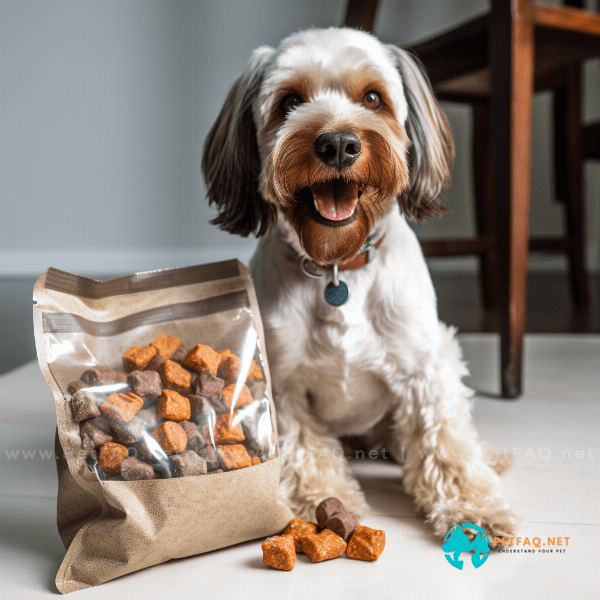
Understanding Your Dog’s Nutritional Needs
Choosing the right dog training treats also means understanding your furry friend’s nutritional needs. A balanced diet is essential for your dog’s health and well-being, and the treats you choose should complement their regular diet.
The Importance of a Balanced Diet
A balanced diet provides your dog with the essential nutrients they need to stay healthy and active. A well-balanced diet includes a variety of protein sources, such as meat, fish, and eggs, as well as whole grains, fruits, and vegetables.
Reading Labels and Understanding Ingredients
You should also be aware of any ingredients that your dog may be allergic to or that could cause digestive problems. Some dogs may be sensitive to certain proteins, such as chicken or beef, while others may have trouble digesting grains or dairy products.
Portion Control and Moderation
While dog training treats can be a valuable tool for reinforcing positive behavior, it’s important to practice portion control and moderation. Too many treats can disrupt your dog’s diet and lead to weight gain, which can contribute to health problems such as joint pain and diabetes.
To ensure that your furry friend is getting the right amount of treats, consider their size, activity level, and overall nutritional needs. You may also want to limit the number of treats you give during training sessions and balance them with other rewards, such as praise and playtime.
In conclusion, understanding your dog’s nutritional needs is an important part of choosing the right dog training treats. By providing a balanced diet, reading labels and understanding ingredients, and practicing portion control and moderation, you can ensure that your furry friend stays healthy and happy while learning new skills.
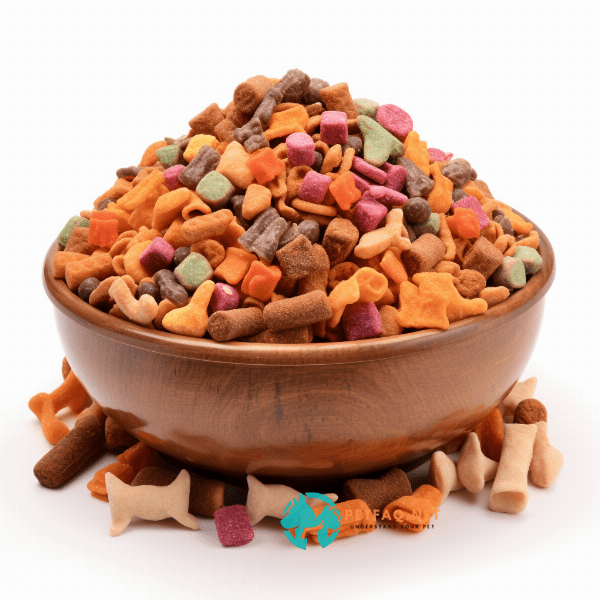
Types of Dog Training Treats Available
There are several types of dog training treats available on the market, each with their own unique benefits and drawbacks. Understanding the different types of treats can help you choose the right ones for your furry friend’s training needs.
Soft and Chewy Treats
One potential drawback of soft and chewy treats is that they may be high in calories and fat, which can contribute to weight gain if not used in moderation. They may also contain artificial flavors and preservatives, which can be harmful to your furry friend’s health.
Crunchy Treats
Crunchy treats are another popular choice for dog training. They’re easy to store and can be broken into small pieces for training purposes. Crunchy treats are often made from whole grains and may be fortified with additional vitamins and minerals.
One potential drawback of crunchy treats is that they may be too hard for some dogs to eat, especially those with dental problems or older dogs. They may also be higher in calories and fat than some other types of treats, so it’s important to use them in moderation.
Freeze-Dried Treats
Freeze-dried treats are a relatively new addition to the dog treat market. They’re made by removing moisture from raw meat or fish, which helps to preserve their nutritional content. Freeze-dried treats are often made from high-quality protein sources, such as beef, chicken, or fish, and may be fortified with additional vitamins and minerals.
One potential drawback of freeze-dried treats is that they can be expensive compared to other types of treats. They may also be too hard for some dogs to eat, especially if they’re used to softer treats.
Homemade Treats
Homemade dog training treats are a popular choice for many pet owners. They’re easy to make and can be customized to your furry friend’s specific dietary needs and preferences. Homemade treats can be made from a variety of ingredients, such as lean meats, whole grains, and fruits and vegetables.
One potential drawback of homemade treats is that they may not have the same nutritional content as store-bought treats. It’s important to consult with your veterinarian before making homemade treats to ensure that they’re safe and healthy for your furry friend.
In conclusion, there are several types of dog training treats available on the market, each with their own unique benefits and drawbacks. By considering your furry friend’s preferences and nutritional needs, you can choose the right treats to help them learn and grow.
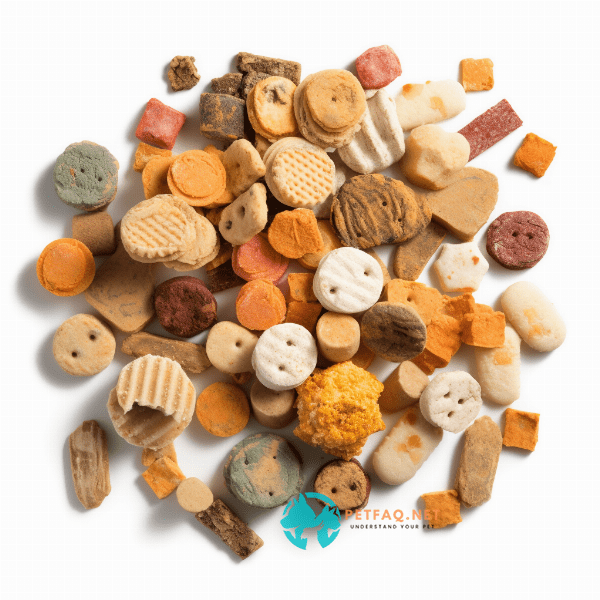
Factors to Consider When Choosing Dog Training Treats
Nutritional Content
The nutritional content of dog training treats is an important consideration. Look for treats that are made from high-quality ingredients, such as lean proteins, whole grains, and natural preservatives. Avoid treats that contain artificial colors, flavors, or preservatives, as these can be harmful to your furry friend’s health.
You’ll also want to consider the calorie content of the treats, as well as their fat and sugar content. Treats that are too high in calories can contribute to weight gain, while treats that are too low in calories may not provide enough energy for training sessions.
Size and Texture
The size and texture of dog training treats are also important factors to consider. Treats that are too large or difficult for your furry friend to eat can pose a choking hazard or cause digestive problems. Look for treats that are small and easy to chew, especially if you have a smaller dog or a dog with dental problems.
You’ll also want to consider your dog’s preferences when it comes to texture. Some dogs may prefer soft, chewy treats, while others may prefer crunchy or hard treats. By choosing treats that your furry friend enjoys, you can make training more enjoyable and effective.
Dietary Restrictions and Allergies
If your dog has any dietary restrictions or allergies, it’s important to choose treats that are appropriate for their needs. For example, if your furry friend is sensitive to certain proteins or grains, you’ll need to choose treats that don’t contain those ingredients.
You can also look for treats that are specifically designed for dogs with dietary restrictions or allergies. These treats are often made from alternative protein sources, such as venison or lamb, and may be free from common allergens like wheat, soy, or dairy.
In conclusion, choosing the right dog training treats requires careful consideration of several factors, including nutritional content, size and texture, and dietary restrictions and allergies. By taking these factors into account, you can find the perfect treats to help your furry friend learn and grow.
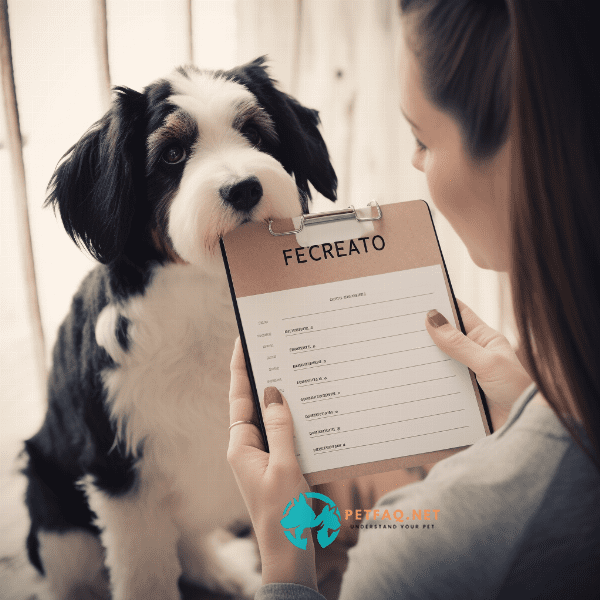
Tips for Using Dog Training Treats Effectively
Using dog training treats effectively can help reinforce positive behavior and encourage obedience. Here are some tips to help you make the most of your furry friend’s training sessions.
Use Treats as a Reward, Not a Bribe
It’s important to use treats as a reward for good behavior, rather than a bribe to get your furry friend to comply with your commands. Offer treats only when your dog responds appropriately to your commands or shows good behavior.
By using treats as a reward, you can reinforce positive behavior and encourage your furry friend to learn and grow. This positive reinforcement can help to build a strong bond between you and your dog and make training more enjoyable for both of you.
Keep Training Sessions Short and Frequent
Training sessions should be short and frequent, rather than long and infrequent. Dogs have short attention spans and may become bored or distracted during long training sessions.
By keeping training sessions short and frequent, you can help your furry friend stay engaged and focused. Offer treats frequently during training sessions to reinforce positive behavior and encourage your furry friend to continue learning.
Vary the Types of Treats You Use
Using a variety of treats can help keep your furry friend interested and engaged during training sessions. Offer different types of treats, such as soft and chewy treats, crunchy treats, and freeze-dried treats.
You can also vary the flavors of the treats you use, such as chicken, beef, or fish. By using a variety of treats, you can help prevent your furry friend from becoming bored or disinterested in training.
Gradually Reduce the Use of Treats
As your furry friend becomes more proficient in their training, you can gradually reduce the use of treats. Offer treats less frequently or only as a reward for particularly good behavior.
This gradual reduction in the use of treats can help your furry friend learn to respond to your commands without the need for a reward every time. It can also help prevent your furry friend from becoming too reliant on treats and encourage them to respond to your commands out of respect for you.
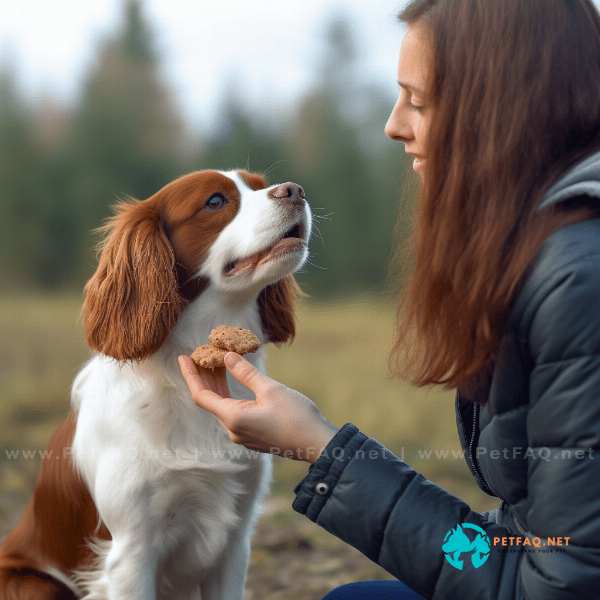
Homemade Dog Training Treat Recipes
Making your own dog training treats can be a fun and rewarding way to ensure that your furry friend is getting the best possible nutrition while learning new skills. Here are a few simple and healthy recipes for homemade dog training treats.
Peanut Butter and Banana Treats
- 1 ripe banana
- 1/2 cup natural peanut butter
- 1/4 cup whole wheat flour
- Preheat oven to 350°F.
- Mash the ripe banana in a mixing bowl.
- Add the peanut butter and mix until well combined.
- Gradually add the whole wheat flour until the mixture forms a dough.
- Roll the dough into small balls and place them on a baking sheet.
- Flatten the balls with a fork.
- Bake for 10-15 minutes, or until golden brown.
Sweet Potato and Chicken Treats
- 1 cup cooked and mashed sweet potato
- 1/2 cup cooked and shredded chicken
- 1/4 cup rolled oats
- Preheat oven to 350°F.
- Mix the cooked and mashed sweet potato with the shredded chicken.
- Gradually add the rolled oats until the mixture forms a dough.
- Roll the dough into small balls and place them on a baking sheet.
- Flatten the balls with a fork.
- Bake for 10-15 minutes, or until golden brown.
Carrot and Apple Treats
- 1/2 cup grated carrots
- 1/2 cup grated apples
- 1/4 cup coconut flour
- Preheat oven to 350°F.
- Mix the grated carrots and apples together in a mixing bowl.
- Gradually add the coconut flour until the mixture forms a dough.
- Roll the dough into small balls and place them on a baking sheet.
- Flatten the balls with a fork.
- Bake for 10-15 minutes, or until golden brown.
In conclusion, making homemade dog training treats is a great way to ensure that your furry friend is getting the best possible nutrition while learning new skills. These simple and healthy recipes are easy to make and are sure to be a hit with your furry friend.
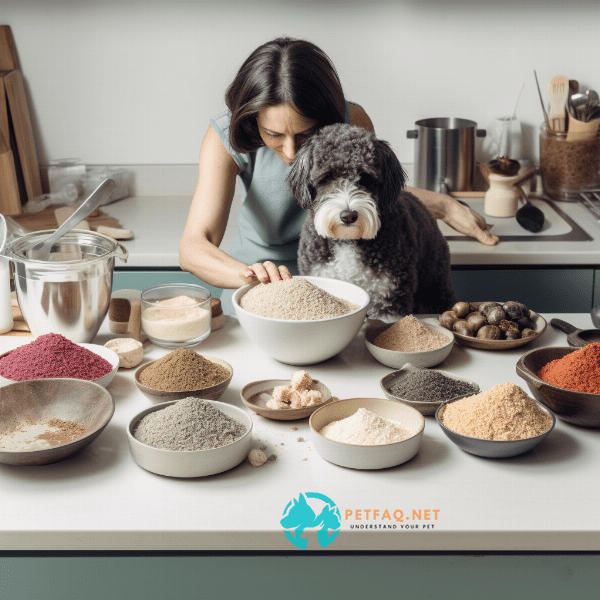
Common Mistakes to Avoid When Using Dog Training Treats
Using dog training treats can be a valuable tool for reinforcing positive behavior and encouraging obedience. However, there are some common mistakes to avoid when using treats during training sessions.
Overusing Treats
One of the biggest mistakes pet owners make when using dog training treats is overusing them. Offering too many treats during a training session can disrupt your furry friend’s diet and lead to weight gain.
To avoid overusing treats, consider using them as a reward for particularly good behavior, rather than for every command your dog obeys. You can also balance treats with other rewards, such as praise and playtime, to encourage positive behavior.
Using Treats as a Punishment
Using treats as a punishment for bad behavior is another common mistake pet owners make. This can be confusing for your furry friend and may lead to a lack of trust and respect.
Instead, focus on using treats as a reward for good behavior, and avoid punishing your dog during training sessions. If your furry friend exhibits bad behavior, redirect their attention to a more appropriate activity, such as a toy or a game.
Offering Inappropriate Treats
Offering inappropriate treats can also be a mistake when using dog training treats. Treats that are too large or difficult for your furry friend to eat can pose a choking hazard or cause digestive problems. Treats that are too high in calories or fat can disrupt your dog’s diet and lead to weight gain.
To avoid offering inappropriate treats, choose treats that are small and easy to chew, especially if you have a smaller dog or a dog with dental problems. Look for treats that are made from high-quality ingredients and are appropriate for your furry friend’s dietary needs and restrictions.
In conclusion, using dog training treats requires avoiding common mistakes such as overusing treats, using treats as a punishment, and offering inappropriate treats. By using treats as a reward for good behavior, choosing appropriate treats, and balancing treats with other rewards, you can help your furry friend learn and grow while strengthening your bond with them.
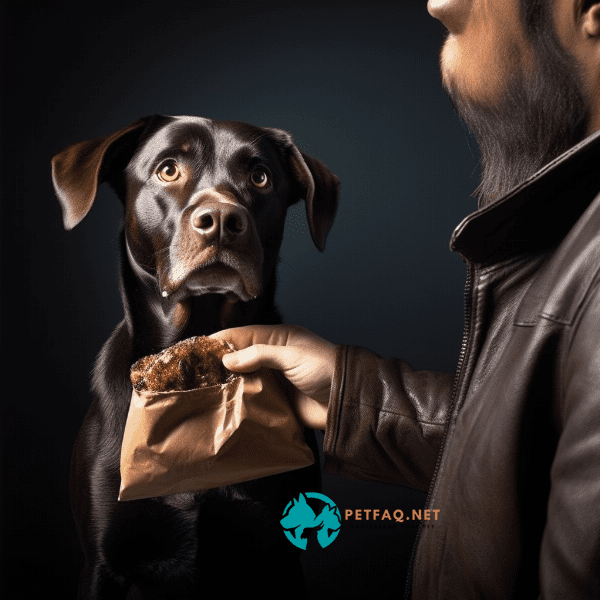
Alternatives to Treat-Based Training
While using treats can be an effective tool for dog training, there are also several alternatives to treat-based training that can help reinforce positive behavior and encourage obedience.
Verbal Praise
Verbal praise can be a powerful alternative to using treats during training sessions. Simply saying “good boy” or “good girl” when your furry friend exhibits positive behavior can be enough to reinforce that behavior and encourage your dog to continue obeying your commands.
Using a happy tone of voice and offering enthusiastic praise can help reinforce positive behavior and encourage your furry friend to learn and grow.
Playtime
Playtime can also be a valuable alternative to treat-based training. Dogs love to play, and incorporating playtime into your training sessions can make learning more enjoyable for both you and your furry friend.
Consider incorporating games, such as fetch or hide-and-seek, into your training sessions. By incorporating playtime into your training routine, you can reinforce positive behavior and encourage your furry friend to obey your commands.
Clicker Training
Clicker training is another alternative to treat-based training that can be effective in reinforcing positive behavior. Clicker training involves using a clicker to signal to your furry friend that they’ve exhibited positive behavior.
The sound of the clicker can help reinforce positive behavior and encourage your furry friend to learn and grow. Clicker training can be used in conjunction with treats or as a standalone training method.
In conclusion, there are several alternatives to treat-based training that can be effective in reinforcing positive behavior and encouraging obedience. Verbal praise, playtime, and clicker training are all valuable tools that can help your furry friend learn and grow while strengthening your bond with them.

Conclusion: Setting Your Dog Up for Success with the Right Treats
Choosing the right dog training treats is an important part of setting your furry friend up for success during training sessions. By taking into account factors such as nutritional content, size and texture, and dietary restrictions and allergies, you can find the perfect treats to help your furry friend learn and grow.
Using treats effectively during training sessions requires using them as a reward, keeping training sessions short and frequent, varying the types of treats you use, and gradually reducing the use of treats as your furry friend becomes more proficient in their training.
However, it’s important to avoid common mistakes such as overusing treats, using treats as a punishment, and offering inappropriate treats. Verbal praise, playtime, and clicker training are all effective alternatives to treat-based training that can help reinforce positive behavior and encourage obedience.
Ultimately, setting your dog up for success during training requires patience, consistency, and the right tools. By choosing the right treats and using them effectively, you can help your furry friend learn and grow while strengthening your bond with them.
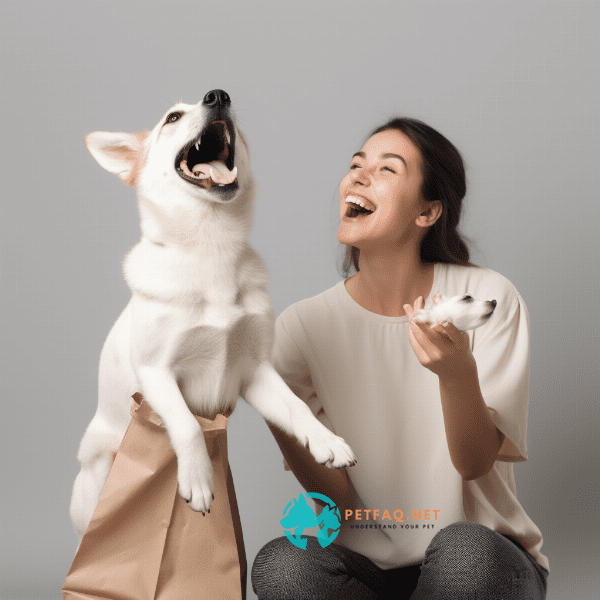
Frequently Asked Questions (FAQs) about Dog training treats:
1. Can too many training treats be harmful to my dog's health?2. What are some common mistakes to avoid when using treats for dog training?
3. Can using too many training treats lead to obesity in dogs?
4. What should I do if my dog becomes overweight from too many training treats?
5. What should I do if my dog is not interested in the treats I'm using for training?



